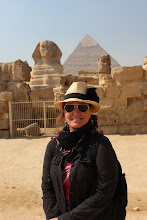Dia de Los Muertos has plenty of meaning.
"The word 'death' is not pronounced in New York, in Paris, in London, because it burns the lips. The Mexican, in contrast, is familiar with death, jokes about it, caresses it, sleeps with it, celebrates it; it is one of his favorite toys and his most steadfast love." Octavio Paz.
I recently read this quote in conjunction with an article on the historical significance of celebrating death here in Mexico. In reading about it, I learned some new facts and thought I would share a few in this blog.
According to the experts, The Day of the Dead has nothing to do with Halloween but the two are close in date and have been celebrated here in Vallarta thanks to the large foreign population. The Day of the Dead celebrations actually hark back to Aztec times and the month of Miccailhuitontli on their calendar. (Try saying it with a mouth full of noodle soup.) Anyway, since the ancient peoples believed in the whole life/death/rebirth process, they treated death quite differently. These pagan practices eventually inter-twined with Cathoicism and the result is two or three days of celebrations in which the pagan and the Christian share the spotlight.
Typically, relatives prepare for the event towards the end of October by making a variety of offerings to the souls of the departed. Included in the gifts are photos, candles, candied skulls, flowers (specifically Marigolds which are an Aztec symbol of death and commonly formed into the pattern of an arch or cross) and the ubiquitous "pan de muerto" or bread of the dead baked in the shape of a pile of bones. Candles are subsequently lit along with aromatic incense to "lure" the souls to the feast and the celebration is underway. Sometimes toys are offered to the souls of children to create an even more pleasant atmosphere. Interestingly enough, there can be as many as seven different celebrations due to the Aztec belief in seven different "heavens" for all types of people.
The entire celebration serves to highlight another idiosyncrasy of Mexican life. The mixture of sadness and joy, reverance and mockery all combine to create a festive atmosphere in a cemetery where death is celebrated with the same energy as new life. The cycle continues...
I recently read this quote in conjunction with an article on the historical significance of celebrating death here in Mexico. In reading about it, I learned some new facts and thought I would share a few in this blog.
According to the experts, The Day of the Dead has nothing to do with Halloween but the two are close in date and have been celebrated here in Vallarta thanks to the large foreign population. The Day of the Dead celebrations actually hark back to Aztec times and the month of Miccailhuitontli on their calendar. (Try saying it with a mouth full of noodle soup.) Anyway, since the ancient peoples believed in the whole life/death/rebirth process, they treated death quite differently. These pagan practices eventually inter-twined with Cathoicism and the result is two or three days of celebrations in which the pagan and the Christian share the spotlight.
Typically, relatives prepare for the event towards the end of October by making a variety of offerings to the souls of the departed. Included in the gifts are photos, candles, candied skulls, flowers (specifically Marigolds which are an Aztec symbol of death and commonly formed into the pattern of an arch or cross) and the ubiquitous "pan de muerto" or bread of the dead baked in the shape of a pile of bones. Candles are subsequently lit along with aromatic incense to "lure" the souls to the feast and the celebration is underway. Sometimes toys are offered to the souls of children to create an even more pleasant atmosphere. Interestingly enough, there can be as many as seven different celebrations due to the Aztec belief in seven different "heavens" for all types of people.
The entire celebration serves to highlight another idiosyncrasy of Mexican life. The mixture of sadness and joy, reverance and mockery all combine to create a festive atmosphere in a cemetery where death is celebrated with the same energy as new life. The cycle continues...


0 Comments:
Post a Comment
<< Home